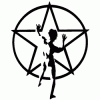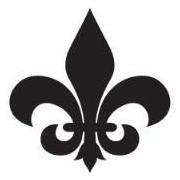All Activity
- Past hour
-
Does this exclude a knife? These are all tools that we use. We don't stuff a hide into a machine and have a belt come out the other end. Some people have lots of tools that help speed up the process. Others have a minimal set of tools. Does it matter if I use a paint brush or an airbrush? They can produce practically identical products. If I call my work area a studio, does that move me into a different class than my basement or garage workshop? If I use a sewing machine versus manual needle and thread, it is hand sewn? If I guide the belt or what ever through the sewing machine, following the stitch line, or I saddle stitch, it is hand sewn? This example will get a lot of feedback. Which side of the bench do you sit on?
-
Soak it in denatured alcohol or acetone then wring it out & let dry. Best advice i can give.
-
I just had this conversation with someone- that shoemakers and saddlemakers are like the surgeons and cardiologists of leatherworkers. (She works in the medical field and understood the analogy)
-
I've never been really able to extract NFO after a real bad case of over oiling However, on modest over oiling I use 1. another piece of veg tan which needs oiling to leech out the oil. Laid in contact and left for months (cos I usually forget it) 2. a piece of brown wrapping paper to leech it out. I find brown wrapping paper work best of all papers
- Today
-
Hey folks, Let me cut to the chase: what strategies do you use to extract or squeeze out ALL the excess Neatsfoot oil from a piece of leather? (a belt in this case) Just thought I'd turn to this group to see if anyone has any brilliant ideas or strategies I haven't considered. Thanks!
-
Antifapup joined the community
-
You can get knife blades for larger bandsaws Build a support table to hold the work. I made extensions to my 10" sq table, front and back, so I could cut long lengths of beech wood. The extensions were about 18" front & back, afair
-
Kitchen Scale for Measuring Thread Tension
Deanr replied to friquant's topic in Leather Sewing Machines
Something I used to adjust my trigger pulls looks like it can easily be adapted. Take a plastic cup, make two holes near the rim, opposite from each other and put a wire through the holes. Now you have what looks like a miniture paint can. Tie your bobbin thread to the wire. Lift the cup up while holding the bobbin. Slowly pour water into the cup until the bobbin releases the thread. Weigh your cup with water on a kitchen scale. Once you have a desired weight, put your empty cup on the scale and fill it to your target. Hang it from the thread and adjust your bobbin until the thread releases -
Andrew Morgan joined the community
-
If you want to get completely technical about it, if you're doing everything with machines then, no. But what is "objects partly or entirely by hand."? How "partly by hand" makes someone an Artisan? The only machines I use are a sewing machine and a manual skiver, could I still be considered an Artisan? I also look at Artisan as "expensive" but that's why I said if I had a shop in an expensive area I could call myself that to bring in people with money to spend. If I were to call myself that in my current area people wouldn't come to my shop because they would think I was to expensive. It's marketing really. You make up a bunch of words in order to get people to buy your stuff. In the end people can use whatever term they want in order to define what they do. They just have to be able articulate to people what that term means because some people will still have questions for specifics. I've heard one person call themselves a leather smith. The term works, you understand that it means it's a person that works with leather but technically it's wrong. A smith is a person that works with metals; blacksmith, bladesmith, silversmith, etc Either way you would still have to define what that means to a person. When people ask me what I do I just say "I own a leather shop" or I just say "I'm a leather worker". It opens a conversation and I expand by saying I make most anything except saddle and shoes. I used to scuba dive a lot. I became a dive master rather quickly and worked weekends with an instructor doing scuba classes. I also did dive tours at the beach for divers that weren't familiar with the area. Some friends, for whatever reason, would introduce me as a professional scuba diver. I'm not sure why they introduced me that way, I only did it on the weekends, but I would cringe when they did. To me it sounds kind of... off putting? elitist maybe? I'm just a guy that likes to work with leather and I make some money at it.
-
Columbus Granite has two locations. The location in Lewis Center has a big open construction dumpster just for remnant pieces that are not a useful size for countertops https://columbusgranite.com/
-
Sorry, just saw these replies. Correct. The machine was an 8mm zz and I converted it to 12. Global makes a 6mm and a 12mm and their parts list shows what needs to be replaced to. Worked no problem on the 8mm base.
-
Holster for a Heritage .22
DocReaper replied to BlackDragon's topic in Gun Holsters, Rifle Slings and Knife Sheathes
Anytime Samalan -
Thanks for all the replies and ideas!! I appreciate the help. I tried a table saw and a skillsaw with some plywood. Weirdly the fine tooth blade burned the leather really badly. A more aggressive tooth blade did better but still was pretty rough. It goes fine for a bit and then it just wants to tear everything up. Bandsaw is a good idea. I'm not sure how I'm gonna hold that large of a piece up while feeding it though the saw. I'd have to build a table around the bandsaw to lay the three sides on to they would stay together. Brian.
-
The definition, according to Wikipedia, of Artisan according to (from French: artisan, Italian: artigiano) is a skilled craft worker who makes or creates material objects partly or entirely by hand. The problem then arises would I consider myself a Artisan if I constructed a belt in this manner: i) used a leather cutter machine to cut the length and width of leather ii) used a skiver machine to cut the buckle fold over down iii) used a leather tongue hole punch machine to put the 5 holes in iv) used a levered punch/grommet setter to set the double side rivets that hold the buckle in place v) used a rivet setting machine to install the double sided rivets for the belt buckle vi) used a stapler for the belt loop vii) used a leather embosser machine to put the pattern in the leather viii) used a airbrush to apply the dye ix) used a motorized burnisher to finish the edges x) used a sewing machine to stitch around the edge of the belt The belt would look professional, functional and be able to be consistently repeatable but what part did I make by hand? To me anything with Artisan in it just means expensive. Hand made is in a completely different level / category particularly hand embossed, hand sewn, hand cut, hand dyed, hand burnished, etc... kgg
-

Holster for a Heritage .22
chuck123wapati replied to BlackDragon's topic in Gun Holsters, Rifle Slings and Knife Sheathes
I can see that, it would also help hide the shape. But if my gun doesn't stop em i dont think i'll try beatin on em with the holster lol. -
If it works it's a winner! I just like to start from fresh on some equipment and this Singer certainly deserved the refresh. It is a great machine as you point out!
-
For the table I laminated Baltic birch for the core. I cut out the necessary features and tweaked to satisfaction. Then I contact cemented Formica to both sides. I bought the plastic edging on Amazon. I welded up the base with 2" square structural tubing and re-used the pedals and mounting plate from the old table. The casters were also Amazon. A little spray gun work and final assembly. Space is always limited so I wanted a smaller than normal table that was ready to roll. I'm happy with the results and table size. I'm not always happy with project outcomes!
-
Holster for a Heritage .22
Samalan replied to BlackDragon's topic in Gun Holsters, Rifle Slings and Knife Sheathes
Now here's a guy who knows what a welt is for, it's basically a club love that Doc. I used a thick welt on a pocket carry holster, so the holster stays, and the gun comes out. It worked great because the welt was 13/16" thick with the leather reversed, rough side out. It worked out great. -
Interesting project How do you plan on gluing up that big of a piece without getting air pockets? I've cut a bit of small leather pieces with a band saw it works well. But i think a guy could cut all the hides together like MuleSaw says with or without glueing them together. Maybe stack them flat on a piece of 3/4 ply, clamp em down, and use a circular saw with a fine blade and an edge guide. Maybe even a piece of sacrificial 1/4 inch ply on the top to help hold the layers tight
-
Thank you Northmount.
-
@speedybri Sounds like a great idea, I'd try to get a small bandsaw, and use a meat cutting blade for it. If you haven't got a band saw yourself, perhaps a friend has got one? Changing a blade on one is really easy, so you could eventually just buy a blade that fit his/her saw and then use it whenever you need to cut the straps. https://kasco.com/collections/boneless-poultry-processed-meat-band-saw-blades A blade like this is what I had in mind. You'd have to draw a line to cut along, but a regular straightedge or a long ruler would do the trick. I'd love to see a post with artillery harness 🙂 Brgds Jonas
-
I would suggest: i) use a motorized leather strap cutter ii) contacting the suppliers of motorized leather strap cutters like Campbell Randall ( https://campbell-randall.com/shop/strap-cutting ) iii) once you have the straps cut to the width you need it would be a matter of gluing and sewing them together. Could you possibly cut back the thickness to 9 / 10 oz as you have an easier job finding a manual leather strap cutter like Tandy ( tandyleather.ca ) ??? kgg
-
Forgot to mention, sorry.. I did try to make 2 strap cutters that had 3/4" clearance, 1.75 width and used a utillity knife blade. One you manually pulled like a standard strap cutter. The other you clamped to the table and pulled the side through. Both failed. Miserably.. 🤪 The worked great with 2 layers. Judt not with thre three layers of 12/13 unfortunately.
-
Hello. I've been doing leather for almost 30 years now. Recently I've started making reproduction harness for civil war artillery reenactors. The traces are 3 layers of 12/13oz and what I'd like to do is glue the sides together and then cut them into 1.75" straps. I've been cutting the straps individually and then gluing each layer together and I'd like to streamline the process a bit by just gluing the entire sides together and then cutting. Any suggestions on how to cut the straps out of that thickness besides a straight edge and utillity knife?...lol. Once all three sides are glued together, it's about 5/8" thick. Plough gauge? Draw gauge? Chainsaw??..lol. Thank you everyone in advance for any and all help with this. It's much appreciated. Brian Merrick. Merricks Custom Leather
-
Holster for a Heritage .22
DocReaper replied to BlackDragon's topic in Gun Holsters, Rifle Slings and Knife Sheathes
The thing you call a Welp I think I call a spine, I used one when I built a holster for a Smith & Wesson 40 Cal Magnum and it actually helped support the trigger housing. If anything else, you can use it as a club.


.thumb.jpg.6e903dd66163ad5672f00f144058c571.jpg)


